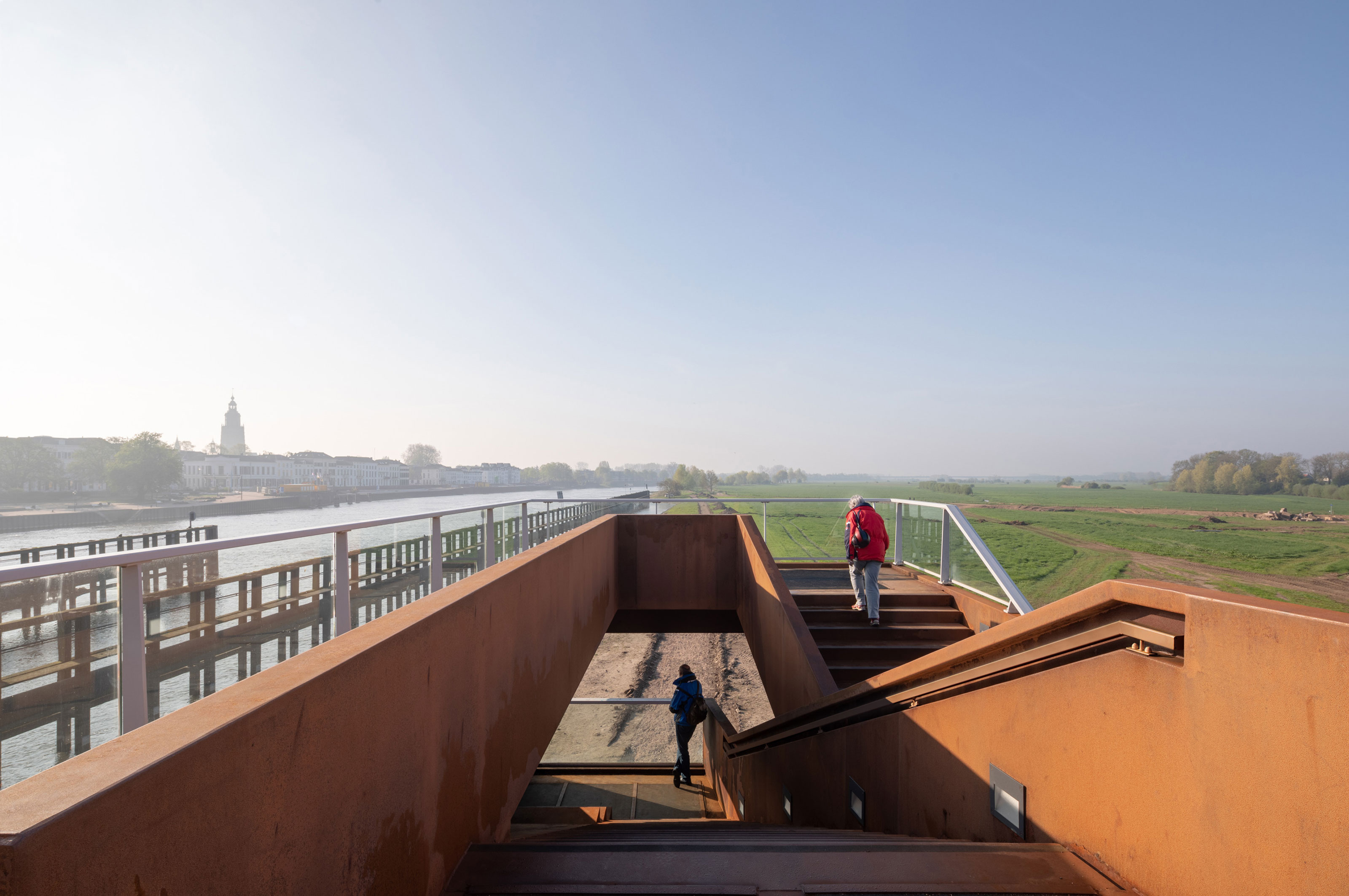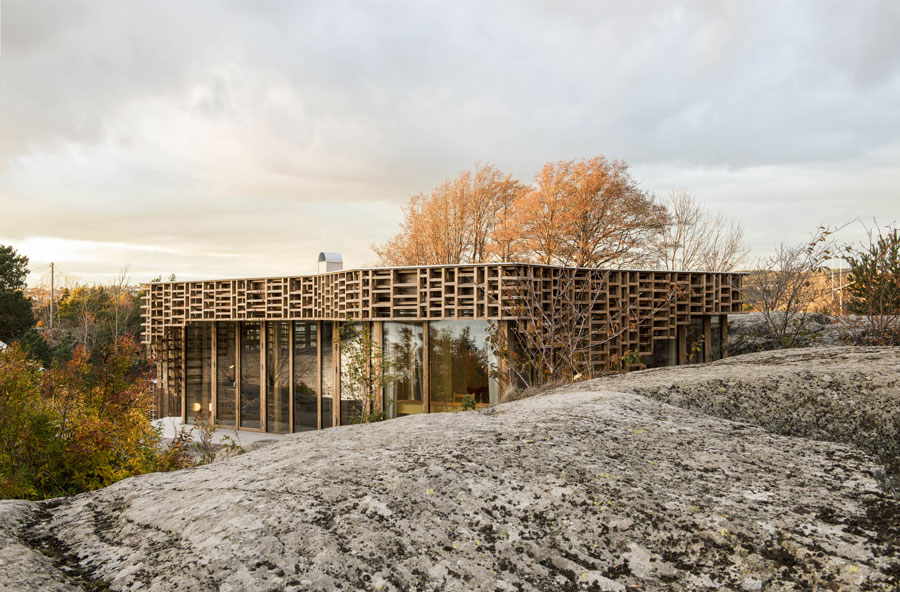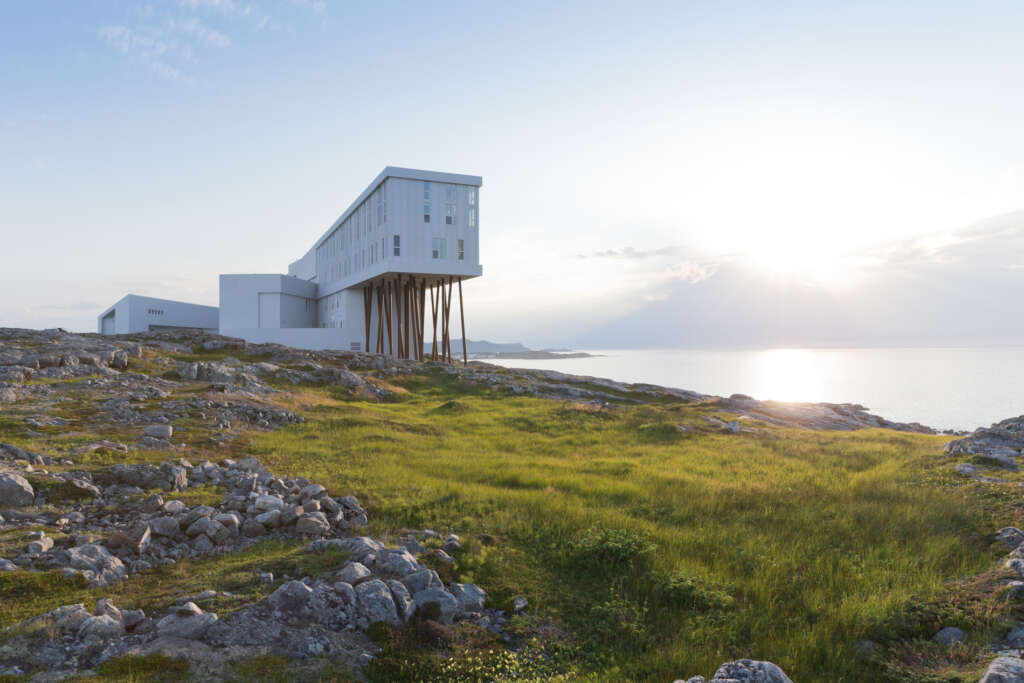
Fogo Island Inn
Architect: Saunders Architecture, Sheppard Case Architects Inc
Location: Fogo Island, Newfoundland, Canada
Type: Hotel
Year: 2013
Photographs: Iwan Baan, Alex Fradkin
The following description is courtesy of the architects. The Fogo Island Inn is a public building for Fogo Island with 29 rooms for guests. The building, located between the communities of Joe Batt’s Arm and Barr’d Islands on the Back Western Shore, is an X in plan. The two storey west to east volume contains public spaces while the four storey south-west to north-east volume contains the remaining public spaces and all the guest rooms and is parallel to the coast.
The public areas on the first floor include an art gallery curated by Fogo Island Arts, a dining room, bar and lounge, and a library specializing in the local region. The former president of Memorial University Newfoundland, Dr. Leslie Harris, donated the foundational material for the library. The second floor includes a gym, meeting rooms, and cinema. The cinema is a partnership with the National Film Board of Canada. The fourth floor roof deck has saunas and outdoor hot tubs with views of the North Atlantic.
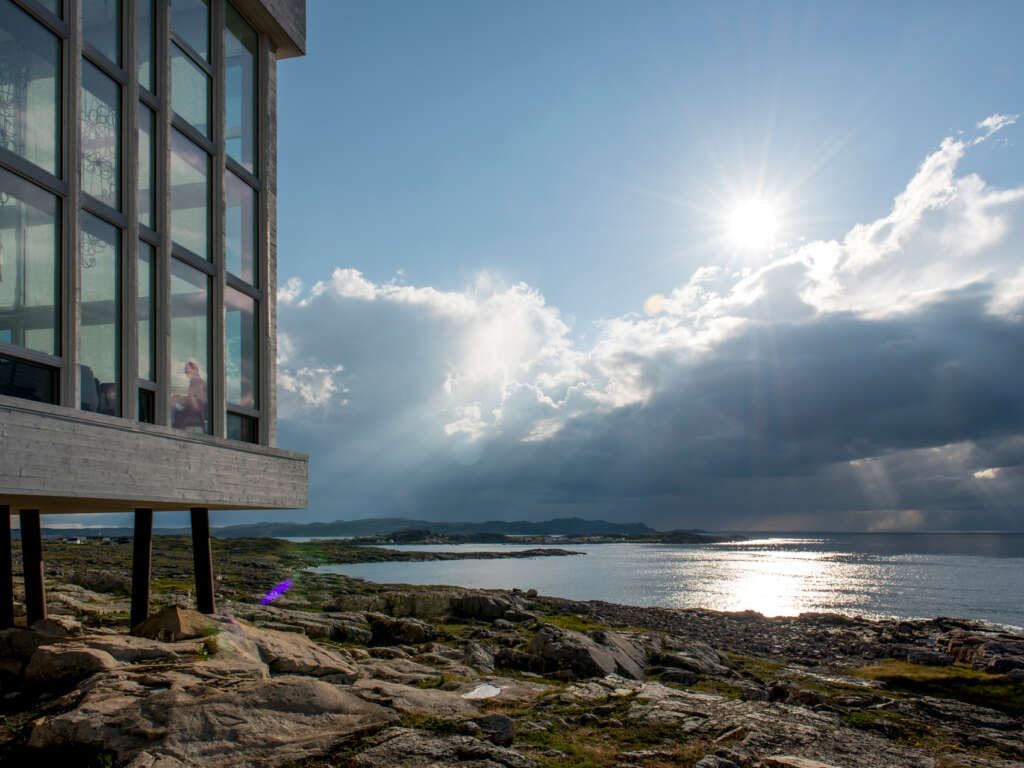
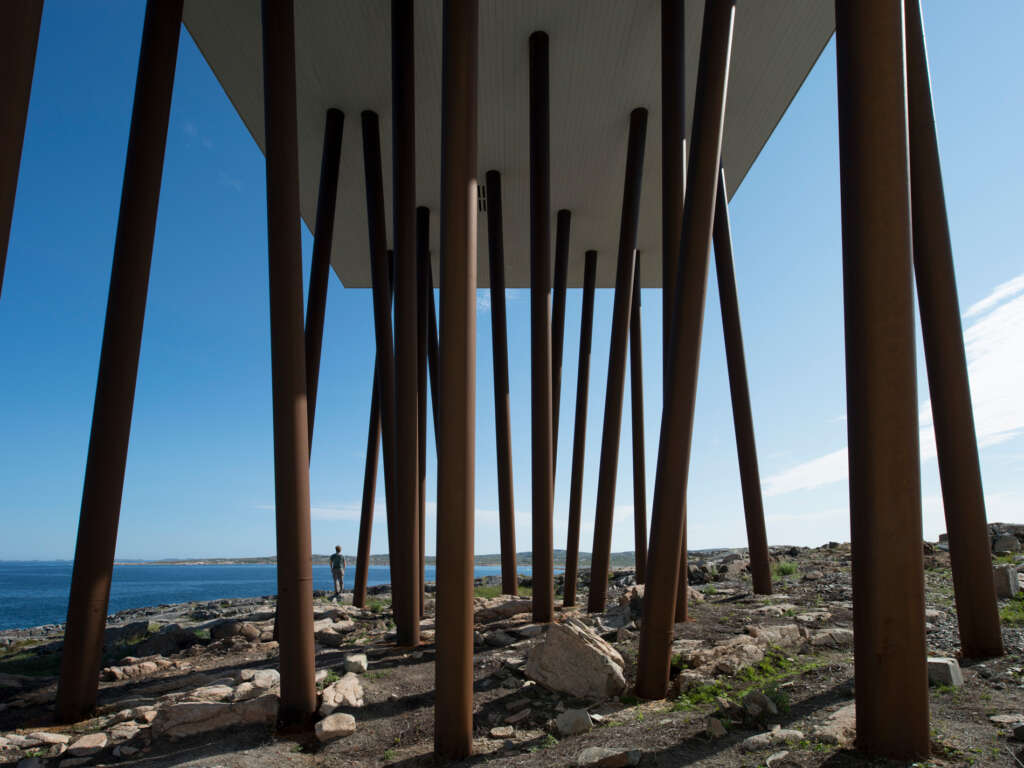
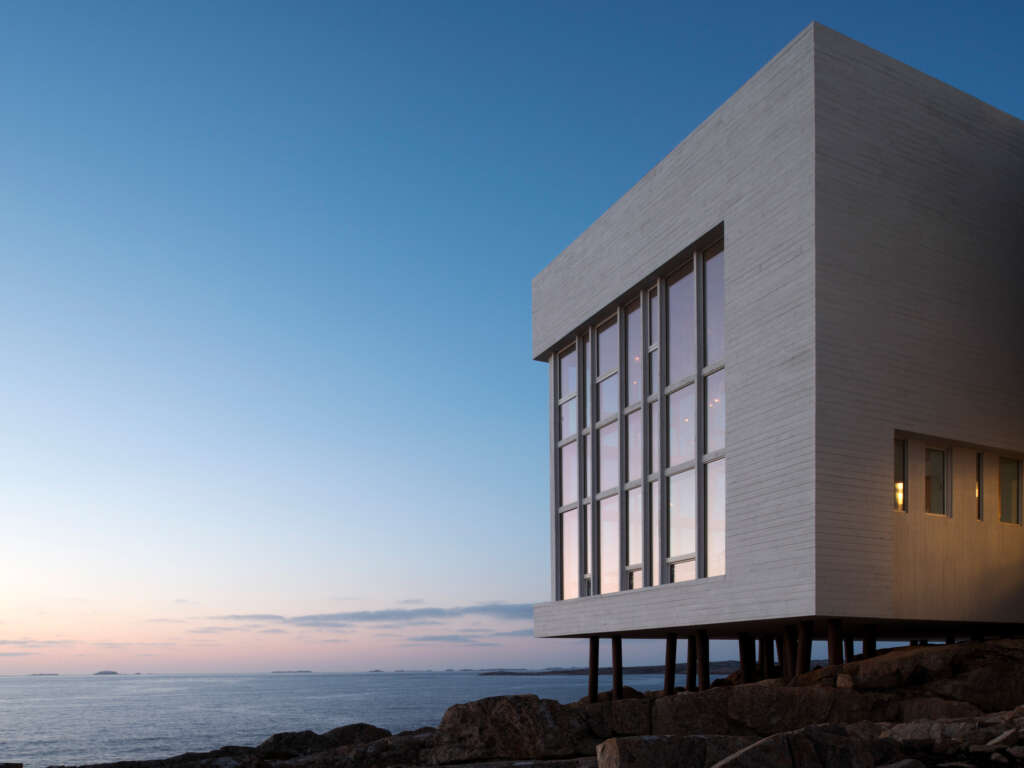
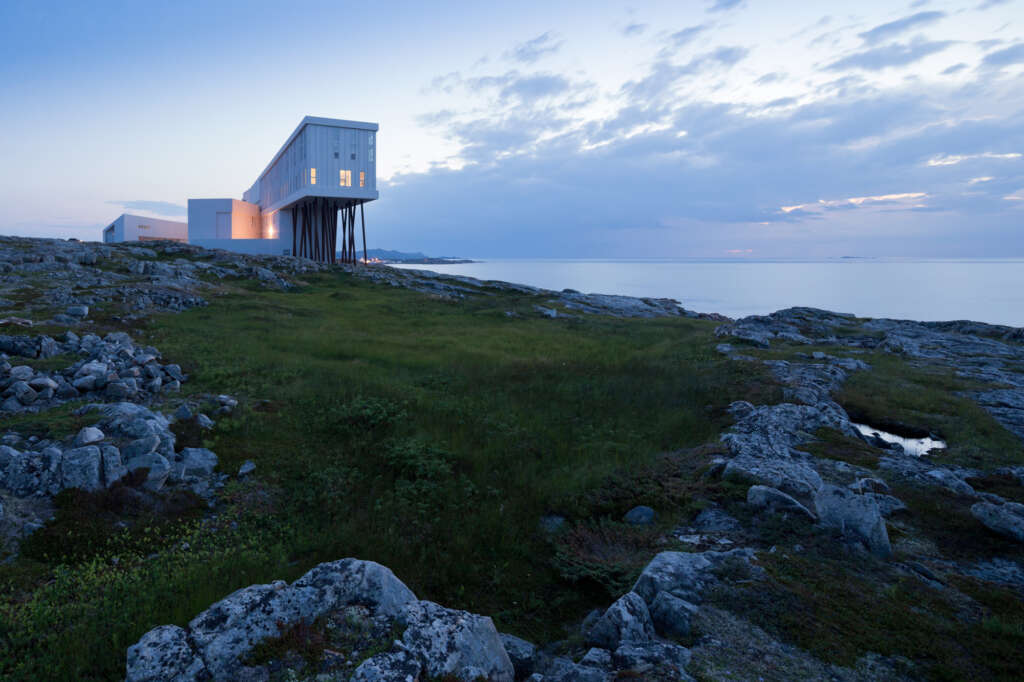
All guest rooms face the ocean with the bed placed directly in front of the view of the Little Fogo Islands in the distance with the North Atlantic beyond. The room sizes vary from 350 square feet to 1,100 square feet. Guest rooms are located on all four floors with the 21 rooms on the third and fourth floors all having a wood-burning stove. The ceilings of the rooms on the fourth floor follow the slope of the roof and the three rooms on the east are double volume spaces with the sleeping area located on the mezzanine.
An outbuilding to the south of the inn contains service functions like laundry, storage, wood fired boilers, backup generator, and solar thermal panels on the roof. The required number and orientation of the solar panels dictated the form of the outbuilding and the angle of the roof. The space between these two buildings creates an entry court and frames the main entrance. Vehicle parking is off site.
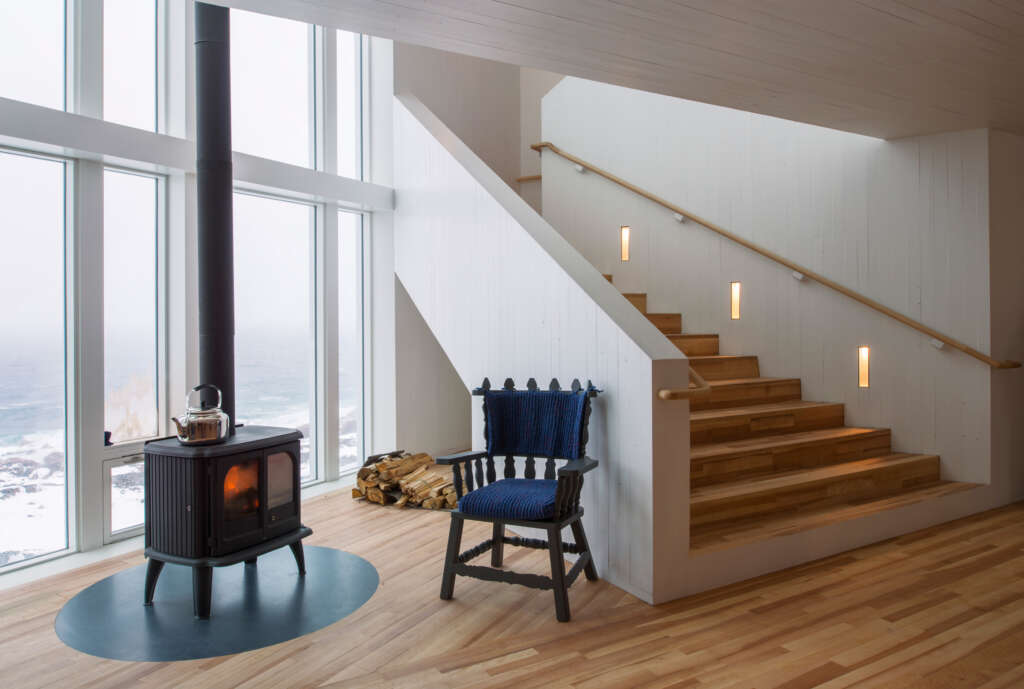
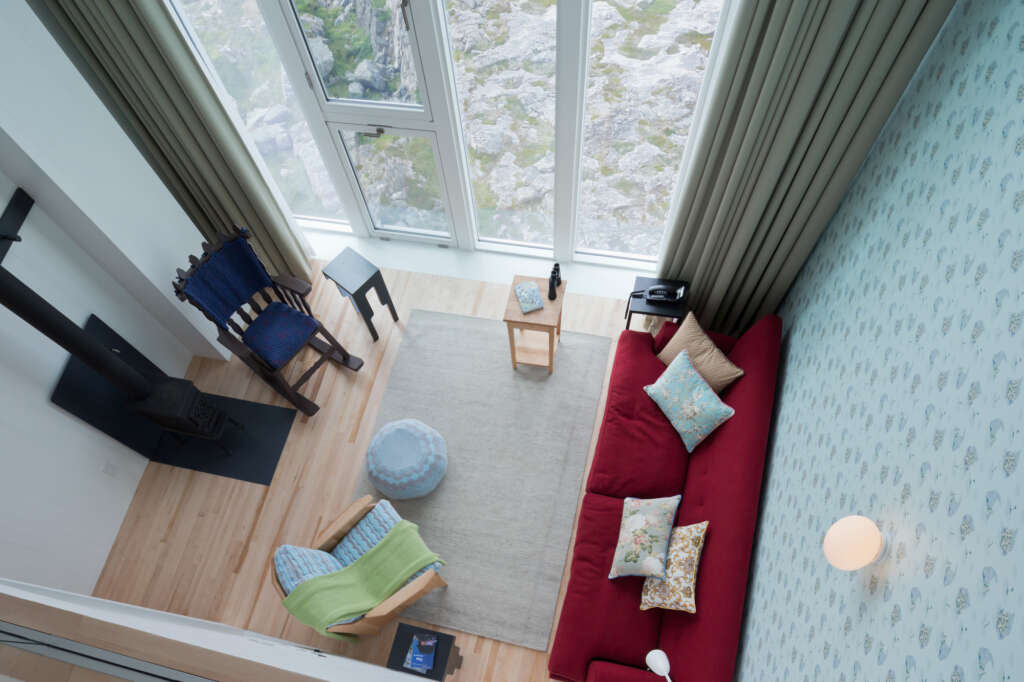
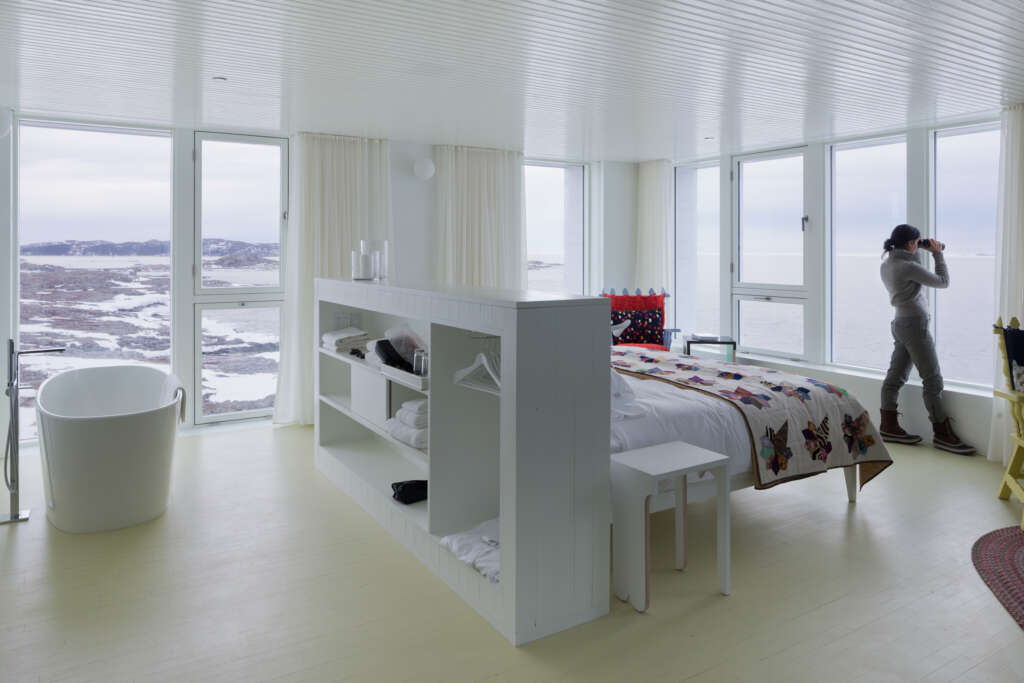
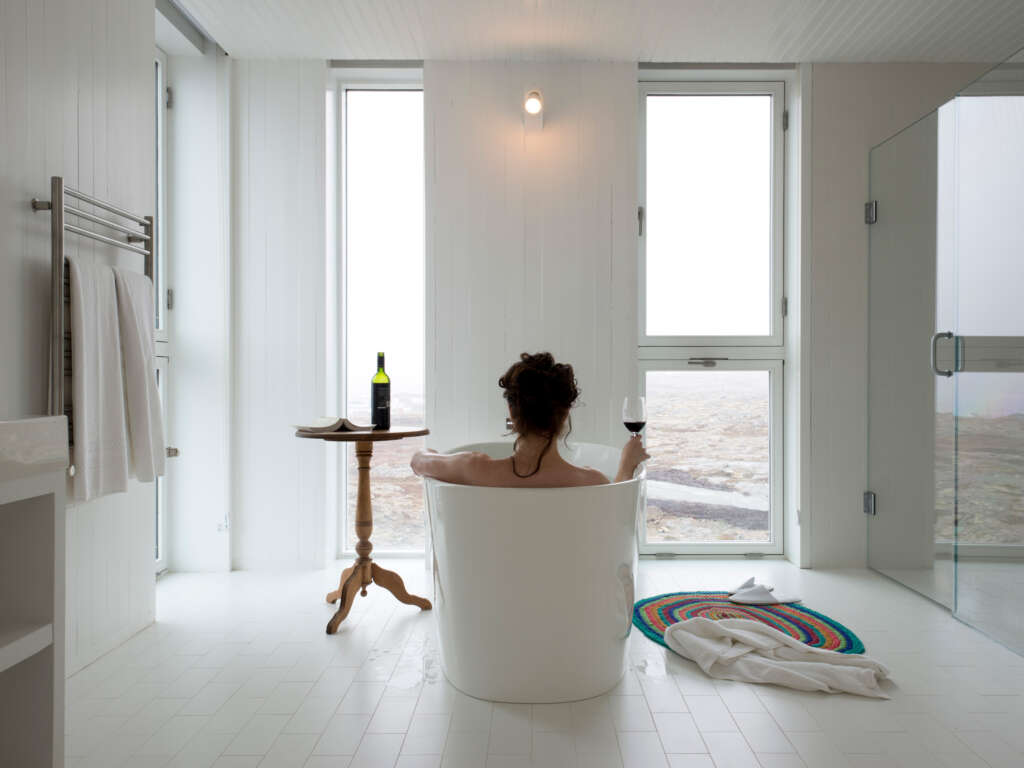
The inn is a fully contemporary structure, built using modern methods. Ecological and self-sustaining systems were subtly integrated from the beginning of the project, incorporating the latest technologies to reduce and conserve energy and water usage. It is a highly insulated steel frame building and the windows have the equivalent rating of triple pane glazing. Rainwater from the roof is collected into two cisterns in the basement, filtered, and used for the toilet water and also to be used as a heat sink. The solar thermal on the outbuilding panels provide hot water for in-floor heating, laundry and kitchen equipment.
The inn is completely tied to Fogo Island and traditional Newfoundland outport architecture by the way it sits in the landscape and the materials used throughout. The building hits the land directly without impacting the adjacent rocks, lichens and berries. The exterior cladding is locally sourced and milled Black Spruce. The knowledge and skill of local carpenters and craftspeople were essential for establishing the details used throughout the buildings.
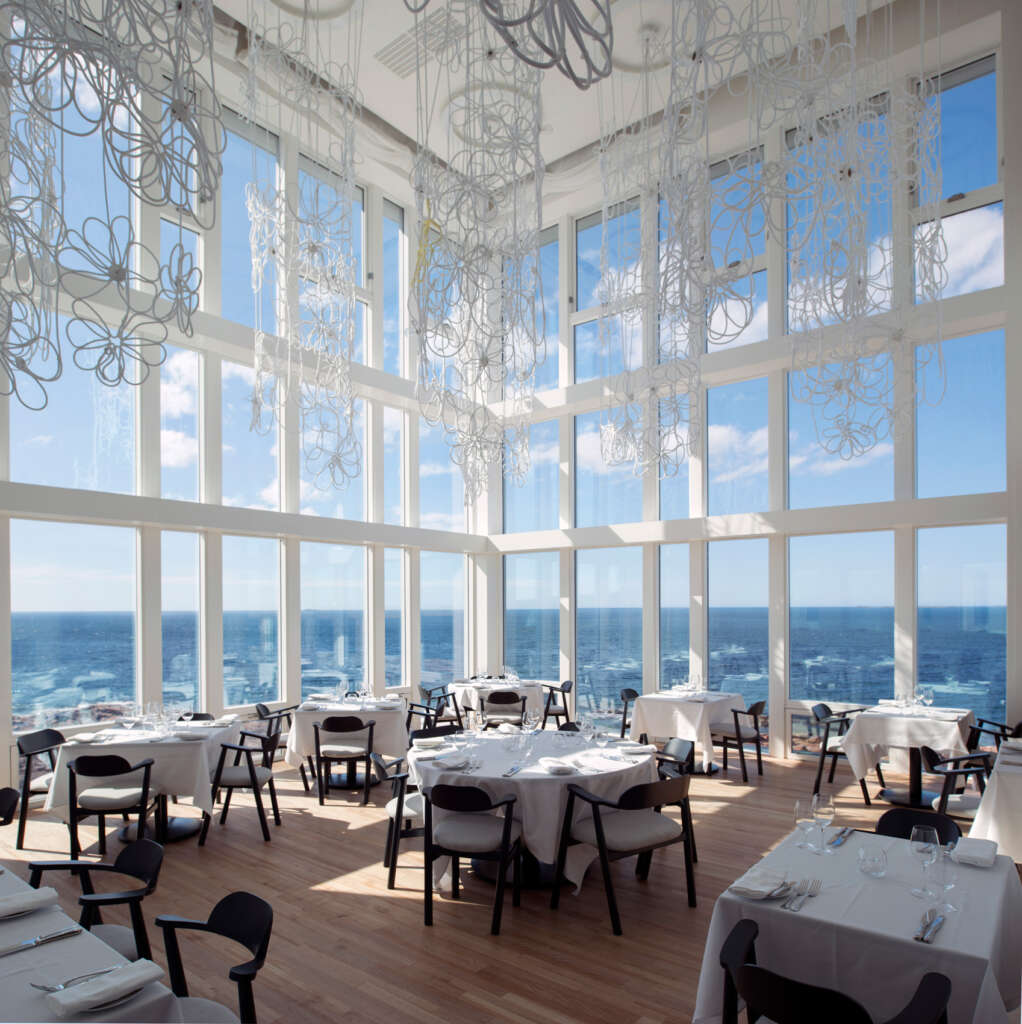
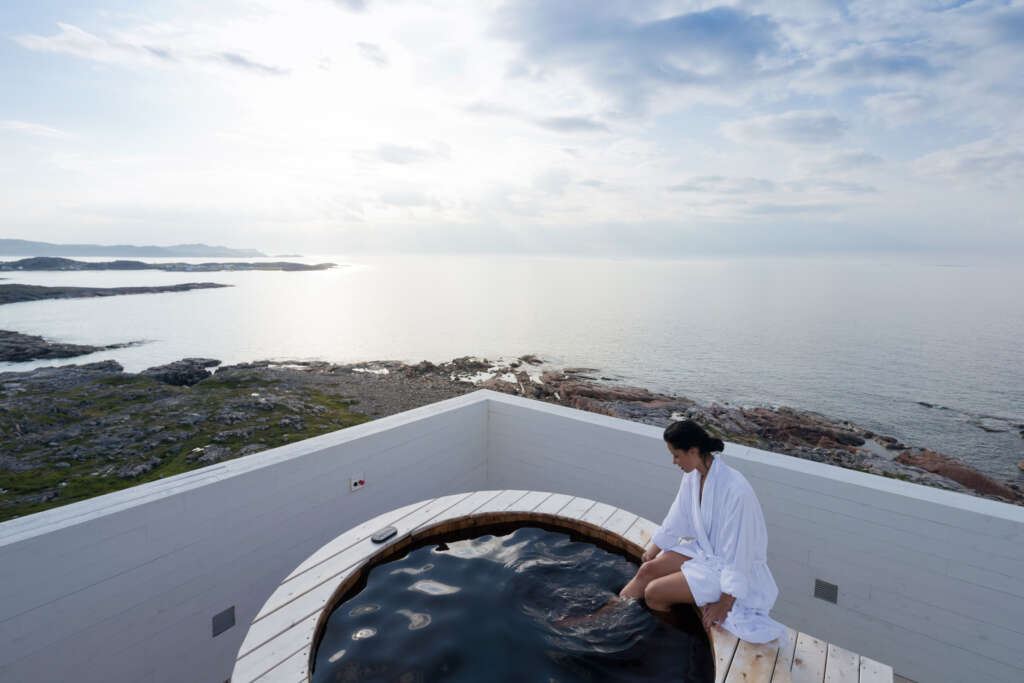
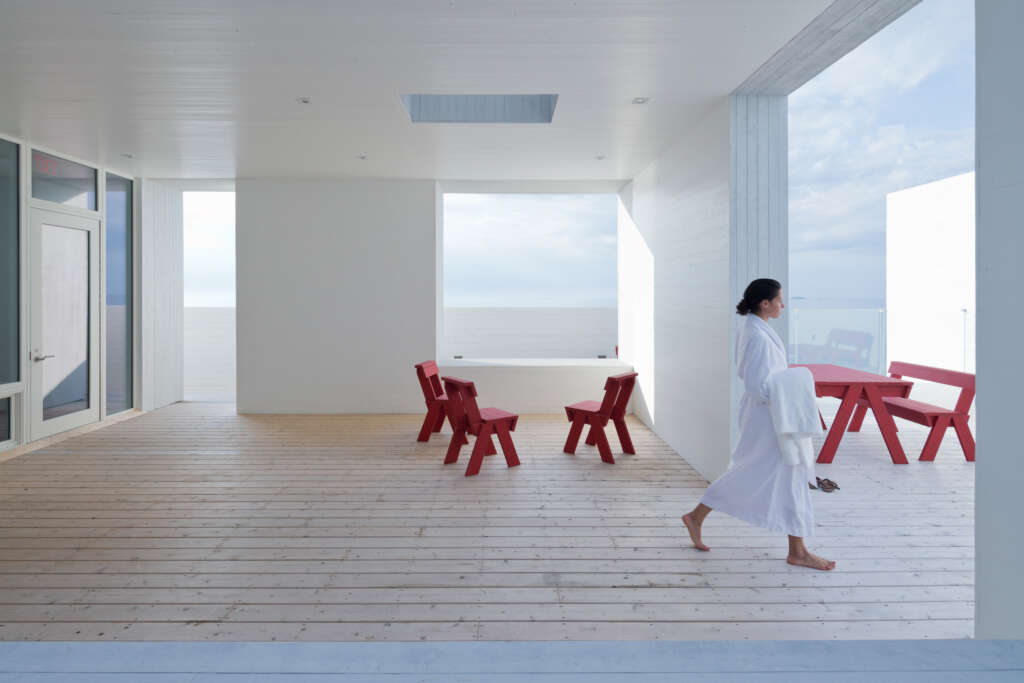
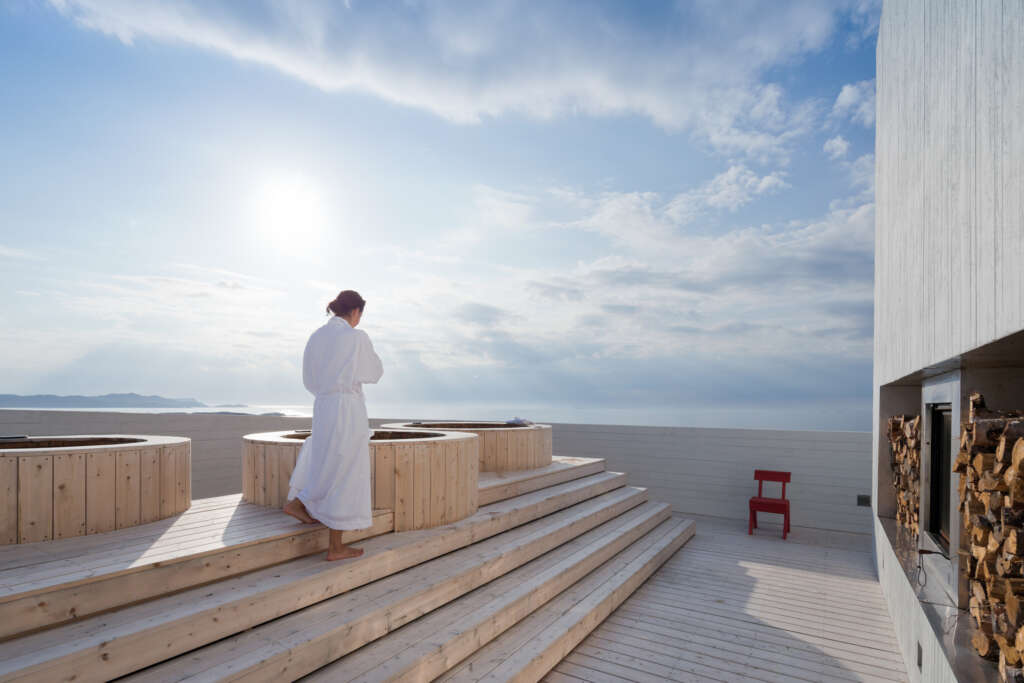
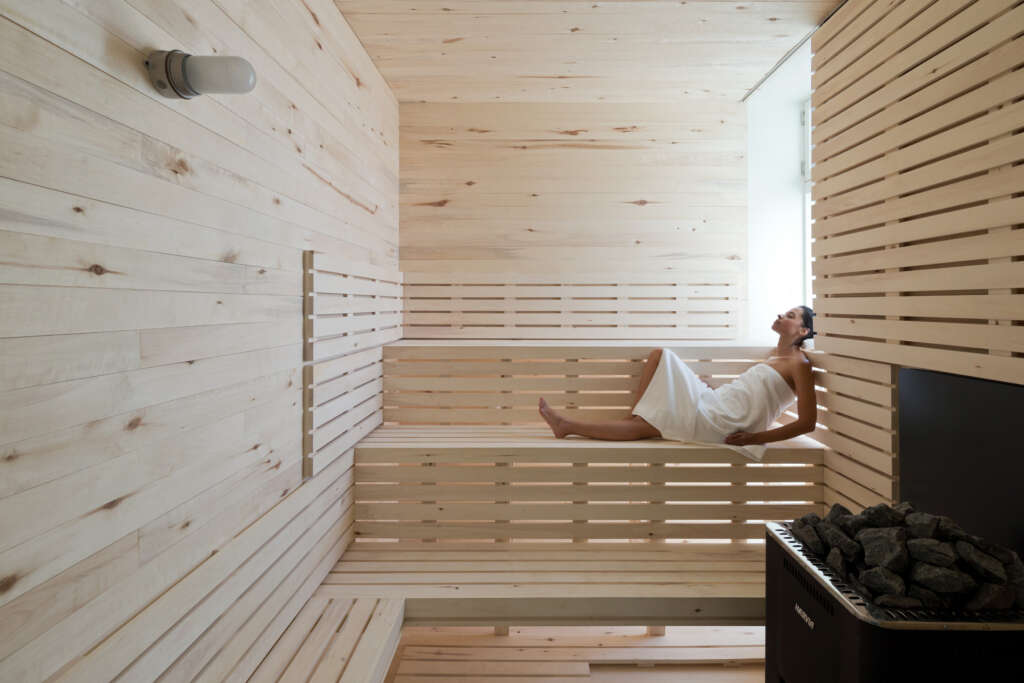
The interiors of the inn continue the incorporation of the traditional with the contemporary. The materials, history, craft techniques and aesthetic of outport Newfoundland are the starting point for what has become a long term and ongoing collaborative project between contemporary designers from North America and Europe and the men and women makers and builders of Fogo Island and Change Islands. The furniture, textiles and interior surfaces throughout the inn are reminders that you are on the Back Western Shore of Fogo Island.
The Fogo Island Inn is owned by the Shorefast Foundation, a Canadian charitable organization established by Zita Cobb and her brothers with the aim of fostering cultural and economic resilience for this traditional fishing community. The project has been a collaborative effort now lasting over 7 years starting with the relationship between the Fogo Island based Shorefast Foundation and the Newfoundland born and Norway based architect Todd Saunders. This atypical collaboration continues to be a happy adventure and is a kind of miracle considering the typical client-architect relationship on a project of this scale and duration.
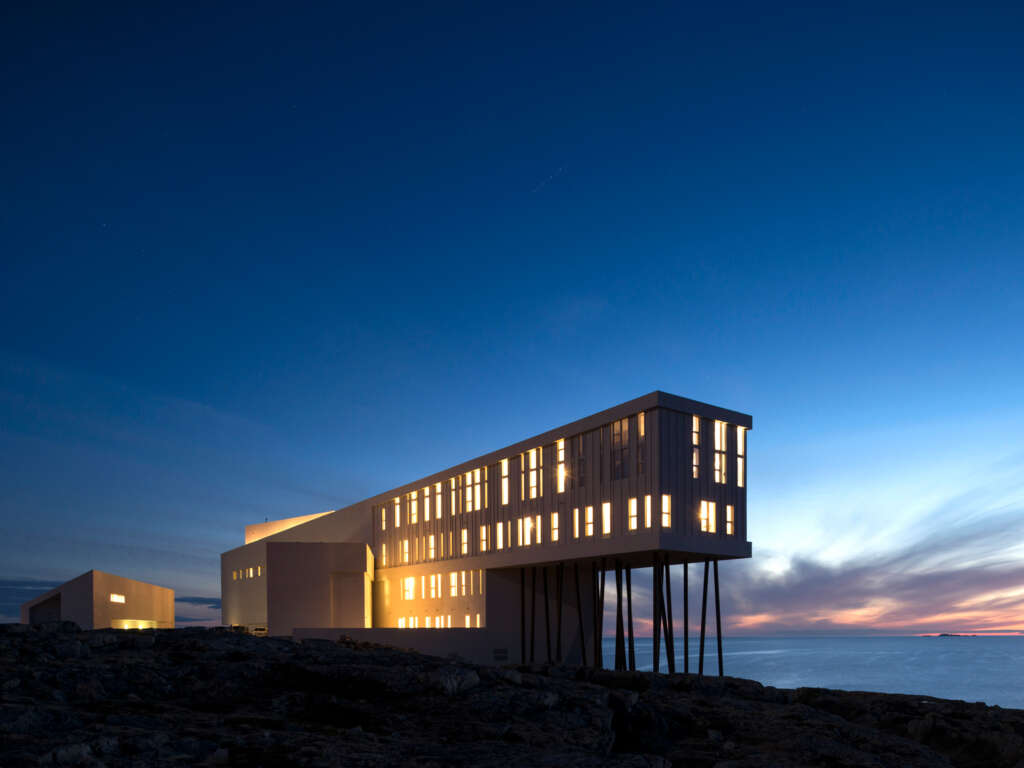
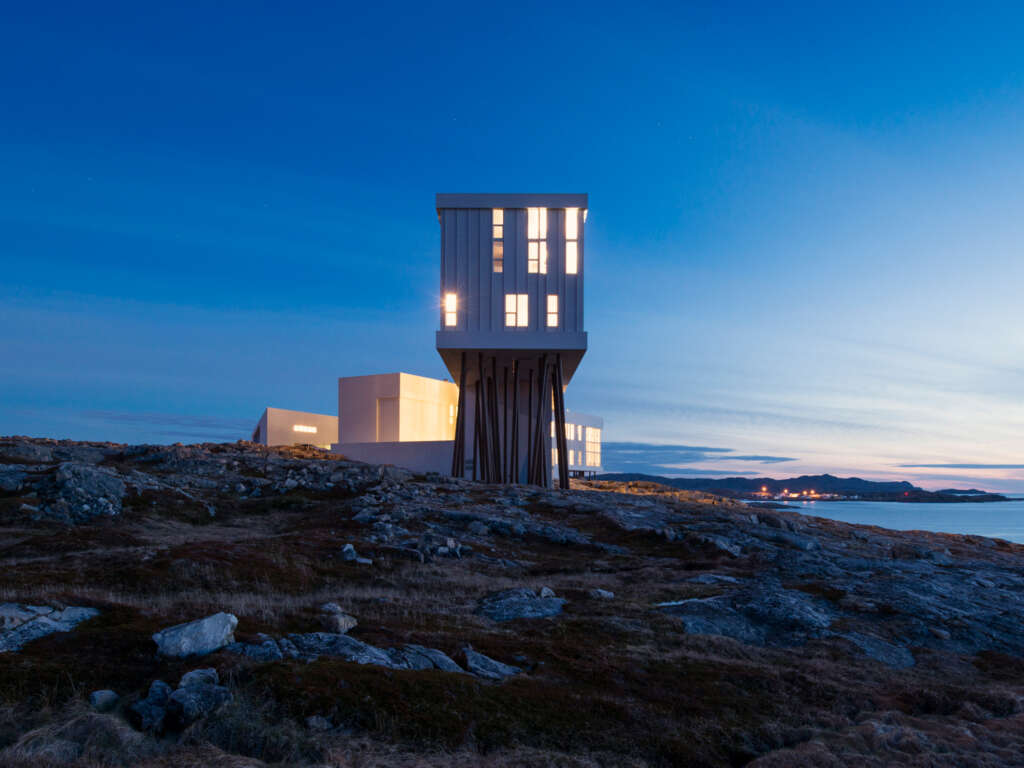
Project Details
- Location: Fogo Island Inn: Back Western Shore, Fogo Island, Newfoundland
- Street Address: 210 Main Street, Joe Batt’s Arm, Newfoundland, NL A0G 2X0, Canada
- Architects: Saunders Architecture, Sheppard Case Architects Inc (local architect)
- Design Team: Todd Saunders, Ryan Jørgensen, Joseph Kellner, Attila Béres, Nick Herder
- Structural Engineering: DBA Consulting Engineers Ltd.
- Mechanical and Electrical Engineering: Crosbie Engineering Ltd., Sustainable Edge Ltd., Odyssey Mechanical Inc., Bayview Electrical Ltd., Jenkins Power Sheet Metal
- Construction supervision: Shorefast Foundation; Anthony Cobb, Russ Petten, Dave Torraville, Keith Budgell
- Site design supervision: Kingman Brewster, Anis Sobhani
- Interiors Consultants: Rintala Eggertsson Architects (sauna area), Studioilse, 2H Interior Design, Tongtong, Designholmen
- Graphic Design and Wayfinding: Bruce Mau Design, Designholmen, Kristina Ljubanovic
- Lighting Consultant: Dark Tools
- Landscape Design: Shorefast Foundation with consultation from Cornelia Oberlander, James Floyd Associates, Todd Boland and Tim Walsh, M.U.N. Botanical Garden
- Furniture, Textiles and Wallpaper: Ineke Hans, Studiomama, Glass Hill, Donna Wilson, Simon Jones, SCP, Élaine Fortin, Tjep, Kym Greeley, Erika Stephens-Moore, Martine Myrup, Nick Herder, Yvonne Mullock, Chris Kabel, Winds and Waves Craft Guild, Mike Paterson, Shorefast Foundation Workshop, Eric Ratkowski
- Manufacturers: Shorefast Foundation (furniture and millwork), Land and Sea Steel, Bauhaus Windows and Doors, Delta Windows and Doors, Cottles Island Lumber Company Ltd., Forest Floors, Elte and Ginger’s, Stone Tile International Inc., Arancia Lighting, Flash Reproductions
- Client: Shorefast Foundation; Zita Cobb, Anthony Cobb, Alan Cobb
- Built area: 4,500 m² (gross)
- Design phase: 2006–2010
- Construction phase: June 2010–June 2013


